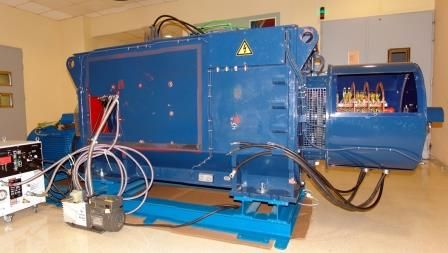
23/02/2017
A Superconducting Electrical Generator in ICMAB
A Superconducting Electrical Generator in ICMAB
The Institute of Materials Science of Barcelona (ICMAB-CSIC) on the UAB campus, which has an agreement with the Barcelona Synchrotron Park to facilitate park companies’ access to its science and technology facilities, jointly with Gamesa Innovation and Technology, a leading Spanish technology company in the wind energy industry and the Institute of Materials Science of Aragón (ICMA-CSIC-UNIZAR), have successfully completed the first phase of development of the first medium speed superconducting generator to be used in conventional medium power wind turbines (2MW).
Remember that superconducting materials have the remarkable property to transport electricity without producing heat thanks to an absence of electrical resistance. This class of singular materials has been known by physicists for a long time but the technology transfer challenge is still there: this first prototype (see picture) as the result of four years of collaboration between the three entities is great news.
The advantages of this new type of electric generator compared to the conventional generators are diverse: it simplifies the entire mechanical structure of the wind turbine as well as the electronic system; simplifies assembly and maintenance, reduces the risk of breakdowns; the time of intervention for maintenance is extended; and, in the near future, the cost will be reduced according to the rapid evolution of superconducting materials.
The future implementation of this type of electric superconducting generator in the wind turbines opens a new perspective to the wind energy industry, making windmills more efficient and robust and reducing the costs of energy production.
Congratulations and fair winds!
Remember that superconducting materials have the remarkable property to transport electricity without producing heat thanks to an absence of electrical resistance. This class of singular materials has been known by physicists for a long time but the technology transfer challenge is still there: this first prototype (see picture) as the result of four years of collaboration between the three entities is great news.
The advantages of this new type of electric generator compared to the conventional generators are diverse: it simplifies the entire mechanical structure of the wind turbine as well as the electronic system; simplifies assembly and maintenance, reduces the risk of breakdowns; the time of intervention for maintenance is extended; and, in the near future, the cost will be reduced according to the rapid evolution of superconducting materials.
The future implementation of this type of electric superconducting generator in the wind turbines opens a new perspective to the wind energy industry, making windmills more efficient and robust and reducing the costs of energy production.
Congratulations and fair winds!
More news
14/12/2018
The Open Innovation Forum matches business challenges to academic solutions
07/12/2018
2017 BioCat report: The best of the Bioregion of Catalonia
30/11/2018
Barcelona Synchrotron Park’s Commitment to Sustainable Growth
23/11/2018
Astronomers led by IEEC reveal a cold super-Earth around Barnard’s star
16/11/2018
CRAG’s Researchers discover how to generate plants with enhanced drought resistance
08/11/2018
The Barcelona manifesto: for a city-led science and technology diplomacy









